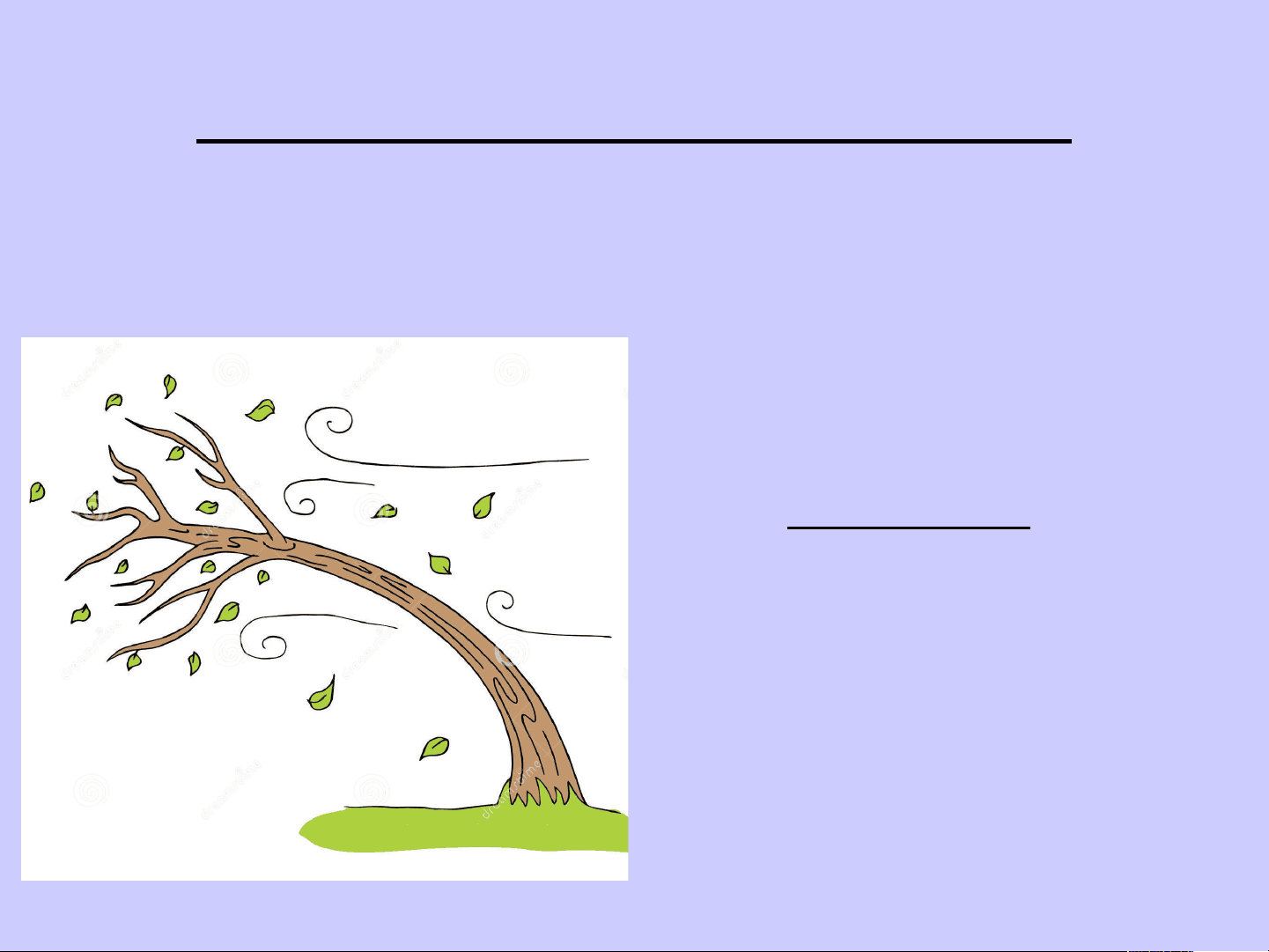
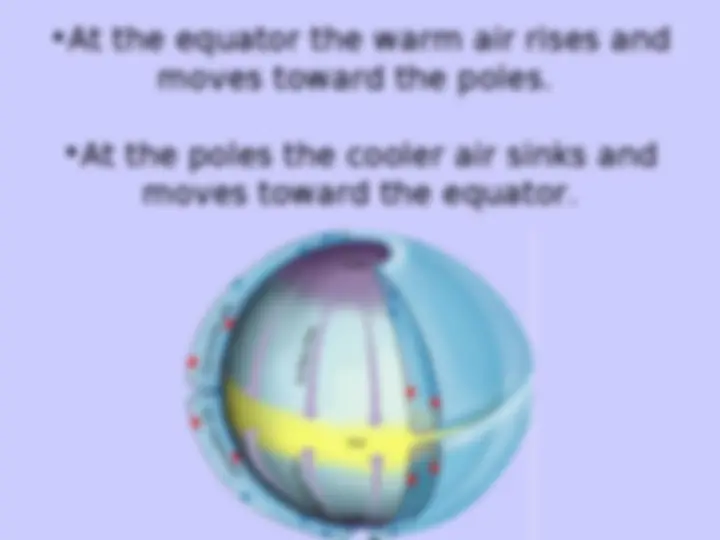
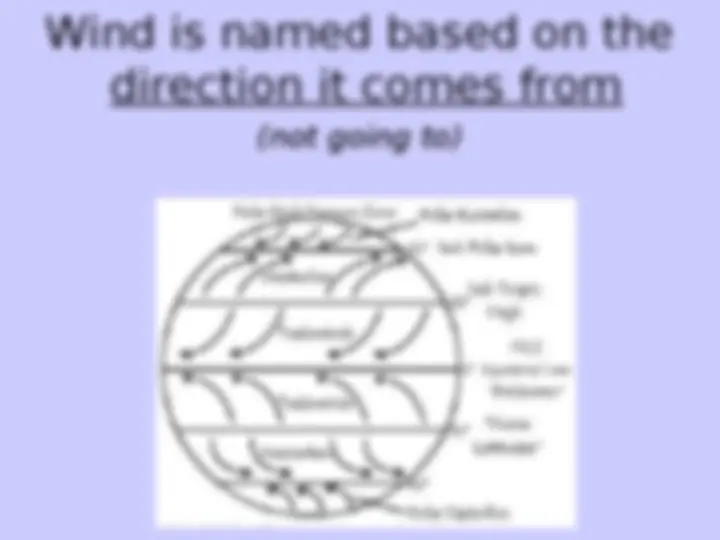

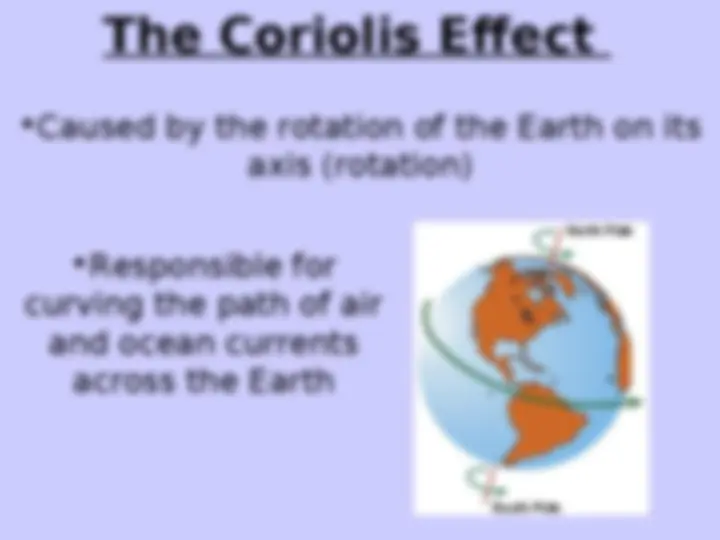
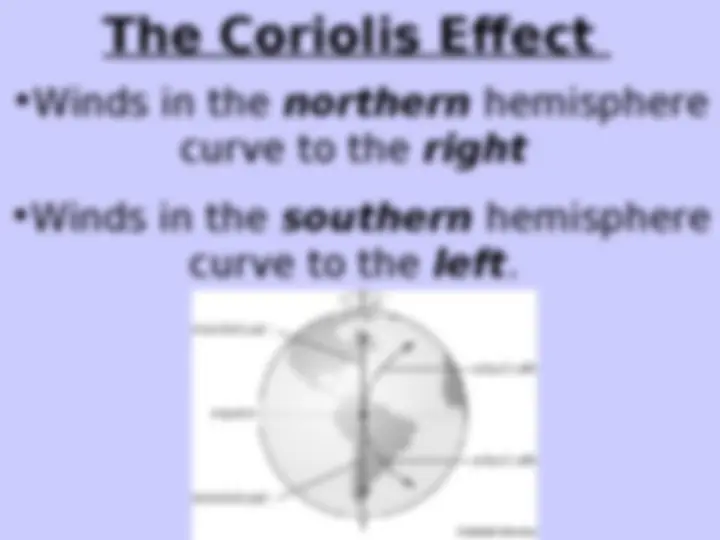


Study with the several resources on Docsity

Earn points by helping other students or get them with a premium plan


Prepare for your exams
Study with the several resources on Docsity

Earn points to download
Earn points by helping other students or get them with a premium plan
Community
Ask the community for help and clear up your study doubts
Discover the best universities in your country according to Docsity users
Free resources
Download our free guides on studying techniques, anxiety management strategies, and thesis advice from Docsity tutors
The causes of global winds, including unequal heating of the earth's surface and the coriolis effect. It also introduces the four major wind belts and their respective wind patterns in the northern and southern hemispheres.
What you will learn
Typology: Exercises
1 / 9

This page cannot be seen from the preview
Don't miss anything!






Do Now:
What does it mean if
something is “global”?
Are caused by unequal heating of the
Earth’s surface
These winds blow from a specific direction
(not going to)
Doldrums – at the equator (calm)
Trade Winds – 30 degrees north and south (few
clouds and little rain fall)
Prevailing Westerlies – 40 – 60 degrees north
and south (Because of the Coriolis effect winds
seem to move from west to east.)
Polar Easterlies - 60 to 90 degrees north and
south (Because of the Coriolis effect winds
seem to move from east to west.)
Coriolis Effect
The Coriolis Effect
Caused by the rotation of the Earth on its
axis (rotation)
Responsible for
curving the path of air
and ocean currents
across the Earth